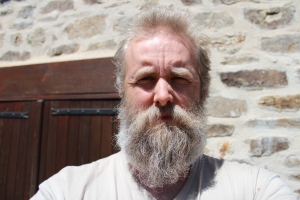TheAncient Scandinavian tribal leader was called a king, from proto-Nordic kunungaR, meaning «wonderful young», and each such selected king had a personal army made up of mostly his own tribesmen.
With time the kingdoms grew in size and the fiefs of different tribes were included in the same kingdoms. They then selected one of them to be the king, and the rest of the tribal leaders were called erilar («men»), i. e. English earl. The fief of the earl selected to be king would be the kingdom’s capital. They were addressed as ‘lords’, from Old English hlewardar, meaning «bread wardens». Each earl had the right to hold 40 housecarls («house men»), each one of them also addressed as ‘lords’. The number of skuþelswainar («table boys») they could hold was unlimited, or rather only limited by the earl’s wealth. As the name suggests, these were men allowed to sit at the earl’s table in his ‘house’. In later years these men were called ‘knights’ and were addressed as ‘sire’. Each earl could also have as many gastir («guests») he could afford to entertain, and these men worked as guards, in his estate or village or fief. They were not allowed to dine with the earl at his table, so naturally they were not (yet?) ‘table boys’. Finally, the earl’s had a number of karteswainar («wax-candle boys»), who in later years would have been called pages, and as the name suggests they were used for minor tasks in the estate, like keeping all the candles burning, and for running errands.
|
Proto-Nordic |
Norse |
English |
Role |
|
ErilaR |
Jarl |
Earl (Man) |
Earl |
|
HûsklarlaR |
Hûskarl |
Housecarl (House Man) |
Bodyguard |
|
SkuþelswainaR |
Skutilsveinn |
Table Boy |
Knight |
|
GastiR |
Gestr |
Guest |
Guard |
|
KerteswainaR |
Kertisveinn |
Wax-candle Boy |
Page |
Each king and earl was the high priest of his kingdom/fief, he was the May King, all the male deities in one and the same man, and in each temple (each dedicated to a single deity) a priest or priestess served, taking the role of a specific deity. A third and last group of priests was dedicated to the spread of (mainly religious) lore and traditions via entertainment; they were travelling musicians and story tellers, and are known to us today as bards or scalds, and later as troubadours. We can assume that rather than rise in the ranks, so to speak, in the religious organisation, the ‘lowest’ (i. e. least prestiguous) of these ranks, that of the scald, was actually made up of the oldest, most experienced and wisest of them all. The deities were primarily young, healthy and beautiful.
|
Proto-Nordic (m/f) |
Norse |
English |
Role |
|
DrûntinaR/Drûntningô |
Drôttinn/Drôttning |
Druid/Druidess |
High Priest |
|
Gûðan/Guðe |
Gôði/Gyðja |
God/Goddess |
Priest |
|
Skahulda/Skahuldamau |
Skâld/Skâldmær |
Scald/Scald Maiden |
Bard |
A Modern Scald;
The longing some of us feel for what once was is unfathomable, incomprehensible and I think of a metaphysical origin; it pulls us back in time, back to our roots, and refuses to to let go of us. The voices of our forefathers call for us, as if nothing mattered more than the wisdom of the ancient man. I, for one, travel in words through this chaotic world, in search of and seeking to restore the order and harmony of Ancient Europe. Had it not been for these deep roots I would have felt very lost. But I am not. I know from whence I come and thus also whither I go; to my own doom perhaps, I certainly swim against the current and also in dangerous waters, but why would a true European let such details get in the way? It is praiseworthy to do what is right, not what is lawful. It is praiseworthy to to what is honourable, not what is socially acceptable. Why ride the tiger when there is more glory in fighting it? HailaR WôðanaR!


